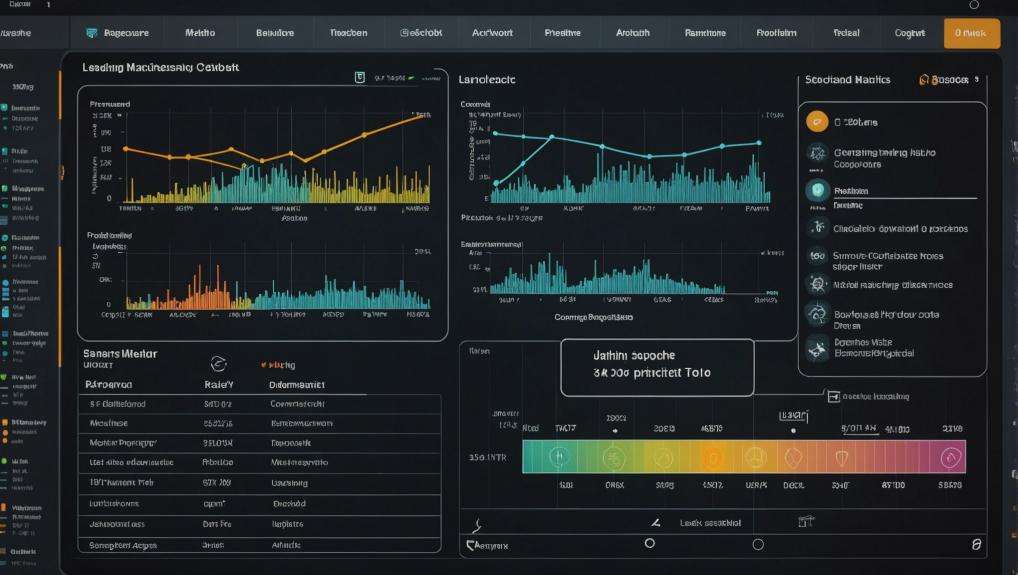Table of Contents
In my experience, TensorFlow stands out as one of the best machine learning software options. It offers scalability and flexibility, making it suitable for various applications, from research to production. It excels in handling vast datasets and provides a wide range of algorithms to choose from. Keep in mind factors like ease of use, community support, and compatibility when deciding on the best software for your project. This information shares valuable insights to help you make an informed decision for your machine learning endeavors.
Main Talking Points
- Consider TensorFlow for scalability and flexibility in research and production environments.
- Scikit-learn is beginner-friendly with a wide range of algorithms for easy adoption.
- PyTorch stands out for deep learning applications and its dynamic computation graph feature.
- Evaluate software based on ease of use, community support, and compatibility with project needs.
- Choose user-friendly options like TensorFlow with Keras or Scikit-learn for simplified model building.
Introduction to Machine Learning Software

What makes machine learning software essential in today's technological landscape?
Machine learning software plays an indispensable role in enabling computers to learn and adapt without being explicitly programmed. It empowers systems to analyze vast amounts of data, identify patterns, and make decisions with minimal human intervention. In today's fast-paced world, where data is generated at an unprecedented rate, machine learning software provides the tools to extract valuable insights efficiently.
The ability of machine learning software to continuously improve its performance over time sets it apart from traditional software. By learning from past experiences and refining its algorithms, it can enhance predictions, optimize processes, and drive innovation. This adaptability is particularly valuable in dynamic environments where conditions change rapidly.
Furthermore, machine learning software offers scalability, allowing businesses to process large datasets and perform complex computations with ease. Its versatility spans across various industries, from healthcare to finance, revolutionizing how tasks are automated and insights are derived. As technology continues to evolve, embracing machine learning software becomes not just advantageous but essential for staying competitive in the digital age.
Top Features to Look For
When seeking the best machine learning software, what key features should one prioritize? The top features to look for in machine learning software are essential for achieving successful outcomes. Here are some key features to prioritize:
| Feature | Description |
|---|---|
| Data Preprocessing | Efficient data cleaning, transformation, and reduction to enhance model accuracy. |
| Algorithm Selection | A variety of algorithms such as regression, clustering, and neural networks for diverse model building. |
| Model Evaluation | Tools for evaluating model performance through metrics like accuracy, precision, and recall. |
| Scalability | Ability to handle large datasets and model training to support real-world applications. |
These features play an important role in the functionality and effectiveness of machine learning software. Prioritizing software that excels in these areas can have a significant impact on the success of your machine learning projects.
Comparison of Leading Tools

When assessing the top machine learning tools, one crucial aspect to bear in mind is their performance across a range of tasks. As a data scientist, I've found that comparing leading tools such as TensorFlow, scikit-learn, and PyTorch can provide valuable insights.
TensorFlow, developed by Google, is known for its scalability and flexibility, making it suitable for both research and production.
On the other hand, scikit-learn, a popular choice for beginners, offers a user-friendly interface and a wide range of algorithms for traditional machine learning tasks.
PyTorch, favored by many researchers, excels in deep learning applications with its dynamic computation graph and intuitive design.
Each tool has its strengths and weaknesses, so it's essential to take into account factors like ease of use, community support, and compatibility with existing systems when making a decision. Ultimately, the best machine learning software depends on the specific requirements of your project and your level of expertise.
User-Friendly Options for Beginners
For beginners looking to explore machine learning, prioritizing user-friendly interfaces can greatly ease the learning curve. When starting out in the field, it's essential to choose software that offers intuitive navigation, clear instructions, and helpful tutorials. One excellent option for beginners is Google's TensorFlow. It provides a user-friendly interface through its high-level API, Keras, which simplifies the process of building and training machine learning models.
Another beginner-friendly software is Scikit-learn, a powerful tool known for its ease of use and well-documented resources. Scikit-learn offers a wide range of machine learning algorithms and is designed to be accessible to users with varying levels of experience.
Additionally, RapidMiner is a popular choice among beginners due to its drag-and-drop interface, which allows users to build machine learning workflows without writing any code.
Advanced Software for Data Scientists

Among the advanced software tools favored by data scientists, Python's scikit-learn stands out for its robust capabilities in implementing complex machine learning algorithms efficiently. Sklearn provides a wide range of machine learning algorithms and tools that can be seamlessly integrated into data science pipelines. Its user-friendly interface coupled with extensive documentation makes it a top choice for tackling intricate data problems effectively.
- Extensive Algorithm Support: Sklearn offers a vast collection of machine learning algorithms, including classification, regression, clustering, and dimensionality reduction techniques.
- Efficient Model Training: The software is optimized for performance, enabling data scientists to train models on large datasets with ease.
- Flexibility and Customization: Sklearn allows for fine-tuning of models and the incorporation of custom algorithms, giving data scientists the flexibility needed for advanced projects.
With its broad features and strong community support, Python's scikit-learn remains a go-to tool for data scientists working on complex machine learning tasks.
Frequently Asked Questions
Can Machine Learning Software Run on All Operating Systems?
Yes, machine learning software can run on various operating systems like Windows, macOS, and Linux. It offers flexibility in implementation across different platforms, enabling users to leverage its capabilities regardless of their operating system preferences.
Are There Any Limitations on Data Size for Machine Learning Software?
When it comes to data size limitations for machine learning software, it's important to take into account the system's capacity and memory capabilities. Large datasets may require more processing power and storage, impacting performance.
How Often Are Updates and New Features Released for Machine Learning Software?
Updates and new features for machine learning software vary in frequency. Some software providers release updates monthly, while others follow a quarterly schedule. It's essential to stay informed about the release cycles to leverage the latest advancements.
Is There a Community Forum or Support Available for Troubleshooting?
There is a community forum and support available for troubleshooting. I find it helpful to connect with others facing similar challenges. Getting quick answers and sharing insights can boost my learning process.
Can Machine Learning Software Be Integrated With Other Data Analysis Tools?
Yes, machine learning software can be integrated with other data analysis tools. I've successfully combined various platforms to enhance insights and streamline processes. Compatibility and seamless integration are essential for maximizing efficiency and performance.
Conclusion
After evaluating various machine learning software options, I've found that the best choice ultimately hinges on your specific needs and level of expertise.
Beginners may prefer user-friendly tools like TensorFlow or scikit-learn, while advanced data scientists may opt for more complex platforms like IBM Watson or Microsoft Azure.
It's important to take into account features such as ease of use, scalability, and support when choosing the right software for your machine learning projects.

1 comment
[…] Additionally, advancements in haptic technology enhance physical interactions, while machine learning guarantees personalized […]